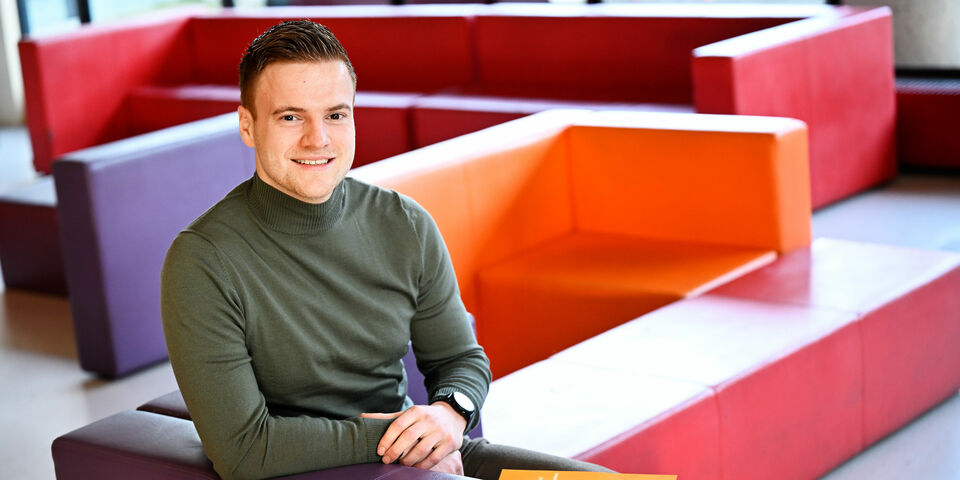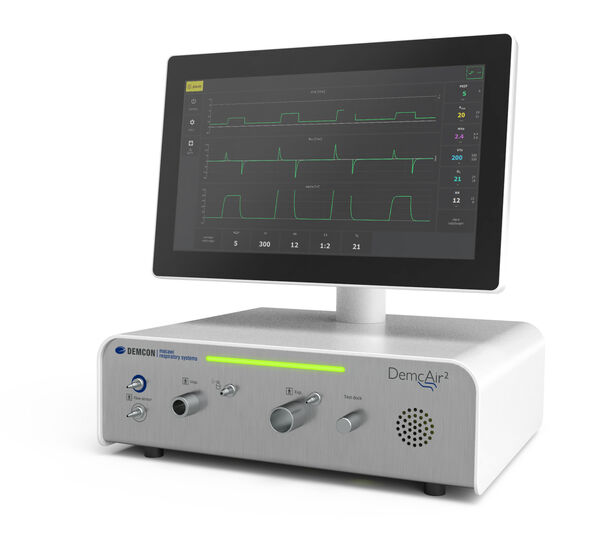Home stretch | Better mechanical respiration
For patients unable to breath well enough unaided, artificial respiration provided by a ventilator can be life-saving. Mechanical engineer Joey Reinders developed self-learning algorithms that enable the ventilator to deliver exactly the right air pressure and adapt to the patient. Today, he defends his doctoral research at the Department of Mechanical Engineering.
As the corona pandemic breaks out, his colleagues at the engineering firm Demcon commit to taking a new ventilator from the drawing board to the hospital bed within a month, whereas doctoral candidate Joey Reinders is already working on new developments for the next generation of mechanical ventilation. In a combination project between TU/e and Demcon, he is researching how a respiratory device can adapt to a patient. Although he gets underway well before the start of the COVID-19 crisis, the pandemic inevitably casts his research on mechanical ventilation in a new light.
When a patient is ventilated, respiratory equipment ventilates the lungs, bringing oxygen and removing carbon dioxide. Many patients in intensive care units (ICUs) are on artificial respiration. At the start of his doctoral research, Reinders spent a couple of days shadowing staff in Erasmus MC, in the ICU run by Diederik Gommers - now well-known as a member of the national Outbreak Management Team - and his motivation to develop better mechanical ventilation only grew.
Reality is more harrowing
“Staff in the IC work incredibly hard. The corona pandemic has certainly given everyone an insight into the ICU and artificial respiration. For a long time, a shortage of ventilators for corona patients posed an imminent threat worldwide. The reality is more harrowing than the pictures shown on the news suggest; in the ICU patients are balancing on the edge of death. And even though as an engineer you are not at the bedside, you certainly see the social relevance of technological developments. My research is often linked to the corona pandemic, but that aside, I hope I can contribute to reducing the work pressure in the ICU and to improving patient care.”
Fundamentally, a respiratory device is no more than a small fan that blows pressurized air into the lungs, explains Reinders. “The doctor sets a particular pressure profile. That means setting a higher pressure for an in-breath, then reducing the pressure for an out-breath. In order to optimize the patient's treatment, it is important that this pressure profile is adhered to as precisely as possible, minimizing any seesawing.”
In order to achieve this, Reinders initially improved the control technology used with the respiratory device, with the ultimate aim of ensuring that the patient is given the pressure originally set by the doctor. Certainly a challenge given the diversity of patients - from premature babies to adults - each with their own respiratory needs. Next, he set to work on self-learning algorithms, to create scope for adapting the device to suit the patient.
Repetitive Control
The technique that Reinders used to do this is called Repetitive Control. This learns from equipment errors recorded during earlier breaths, subsequently correcting them within a number of breaths. In simulations with artificial lungs in a laboratory setting, it was revealed that by using this technique the pressure profile can be followed more precisely than is possible using current mechanical ventilation. Reinders also developed a couple of self-learning algorithms that can aid the choice of optimum treatment for ICU patients able to breathe with partial assistance. “The breathing of sedated patients is very regular. But if patients are themselves breathing, the interaction with the device is all the more important. And so the new algorithms can estimate the patient's own breathing and determine whether the patient and ventilator are breathing in synchrony.”
Reinders and his colleagues hope that these self-learning algorithms will bring patients one step closer to autonomous respiration. “In short, this means intubating the patient, switching on the mechanical ventilation, which itself determines the best treatment, and waiting a number of days until it reports that the patient can be taken off the respiratory device.”
ICU doctors and nurses are initially not that keen on self-guided systems, saying they would rather hold the reins, so Reinders observed during his days spent shadowing in the ICU run by Gommers. The corona pandemic has changed this view and specialists have come to appreciate that equipment with more autonomy really can reduce their workload of providing care and can lead to the patient receiving even better care. In a follow-up study, researchers at TU/e and Demcon are now working with Erasmus MC to develop Reinders' self-learning algorithms. “We are making a concerted effort to help both patients and nurses breathe more easily.”



Discussion